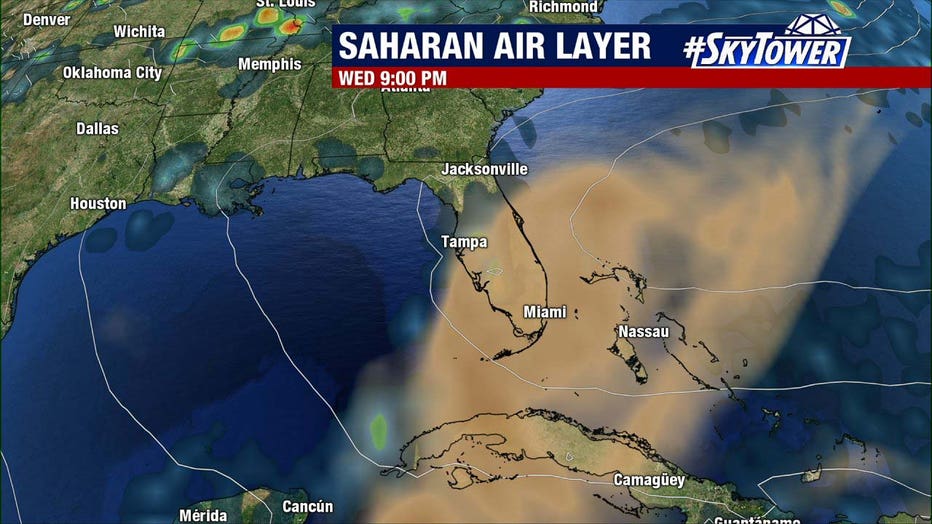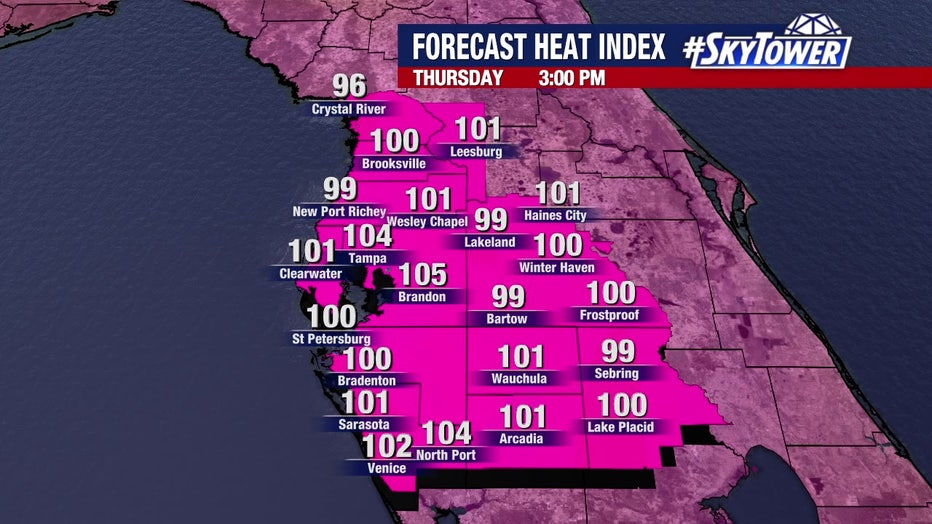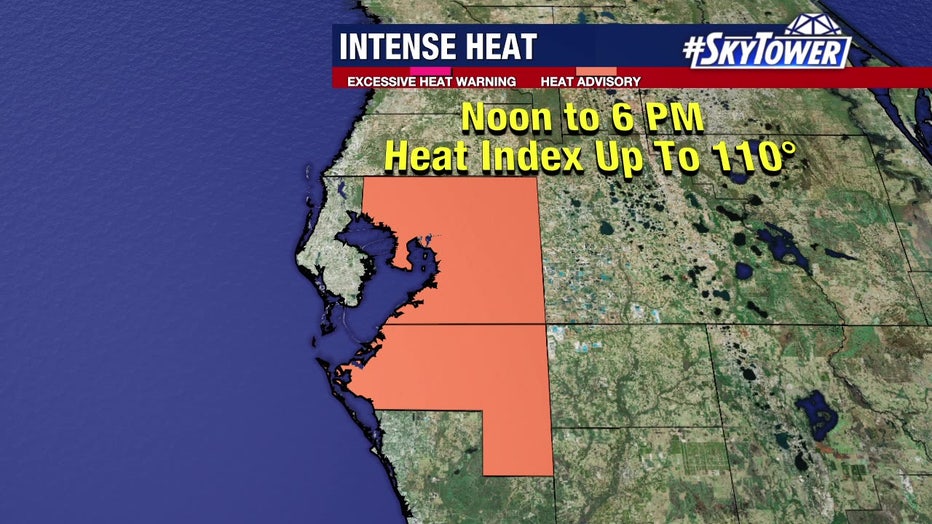Saharan dust drifting over Florida means 'uncomfortably hot' afternoons in Bay Area
TAMPA, Fla. - It’s about to get hazy and hotter in Florida.
A layer of Saharan dust is drifting over the Sunshine State, meaning our rain chances will drop, and our afternoons will be "uncomfortably hot," according to FOX 13’s chief meteorologist Paul Dellegatto.
"Not attractive at all," he says.

That drier air basically pushes down from the mid-levels of the atmosphere, explained FOX 13's meteorologist Dave Osterberg. Basically, that doesn't make much room for thunderstorm activity to help cool things down.
Look how many folks are going to [reach] triple digits…this afternoon." he said Thursday morning. "Especially in Hillsborough and Manatee counties, where it could get as high as 110."

Heat indexes for July 28, 2022.
Because of this, a heat advisory was issued for both counties from noon to 6 p.m.
"If you need me, you know where I'm going to be? Inside," Osterberg said.

Heat advisory issued for Hillsborough, Manatee counties for July 28, 2022.
Rain chances will return to normal by the middle of next week.

What is a Saharan dust plume?
The Saharan Air Layer, also known as Saharan Dust, is made of sand, dirt, and other dust that is lifted into the atmosphere from the vast desert area that covers most of North Africa. This dust is carried in the African Waves which push westward into the Atlantic Ocean.
The Saharan Air Layer is a well-mixed dry pocket of air that usually resides between 5,000 and 15,000 feet above sea level. Since one of the key ingredients for tropical cyclone development is a deep feed of moisture, Saharan Dust often acts to inhibit tropical development.
Once a pocket of Saharan Dust begins moving westward over the Atlantic, it is relatively easy to track using infrared satellite products. This model combines the forecasted development and movement of the Saharan Air Layer with the GFS precipitation rate and pressure contours to depict the movement of the layer.


